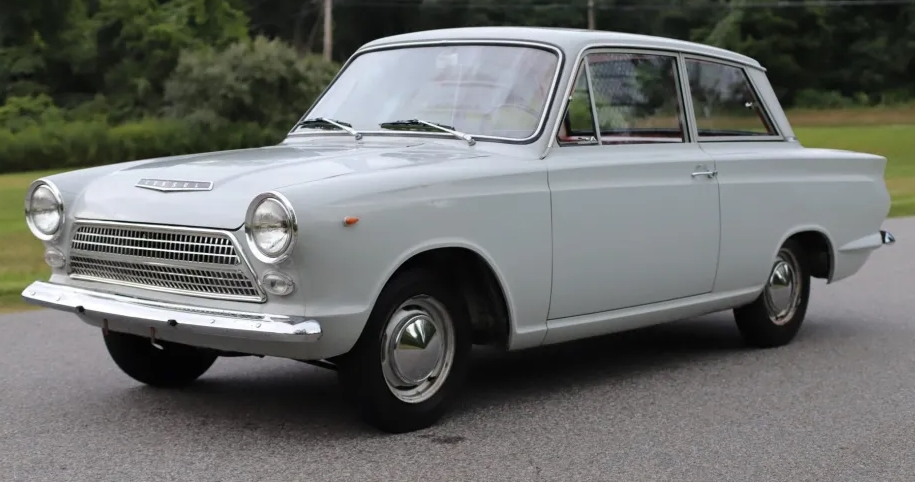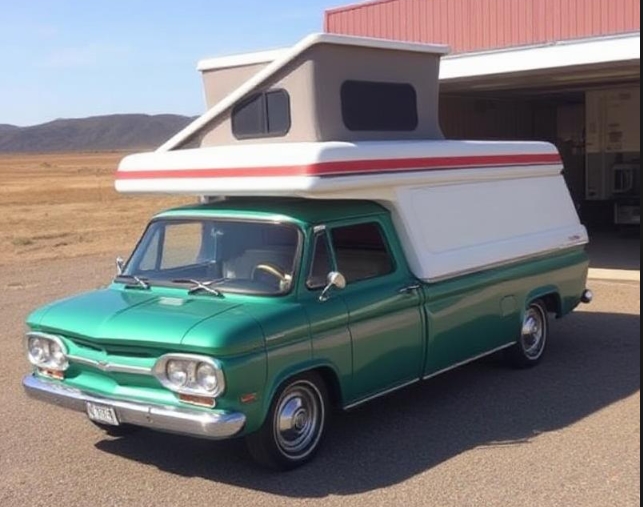The Ford Consul: A Modest Giant in Ford’s European Evolution
The Ford Consul, a name that evokes a sense of dependable, family-friendly motoring for many, holds a significant place in Ford’s long and storied history, particularly within its European operations. More than just a car, the Consul represented a distinct chapter in Ford’s strategy to cater to a burgeoning post-war European market, offering a blend of practicality, affordability, and a touch of aspirational style. From its inception in the early 1950s to its eventual retirement in the early 1960s, the Consul nameplate was applied to a trio of distinct generations, each evolving to meet the changing demands and tastes of its era. This article will delve into the factual evolution of the Ford Consul, exploring its production years, and the various models and trim levels that shaped its identity.
First Generation (1951-1956): The Consul Mk1 – A Bold New Direction
The story of the Ford Consul begins in 1951 with the unveiling of the Consul Mk1 at the Geneva Motor Show. This was a groundbreaking moment for Ford of Britain, as it marked the introduction of the company’s first car to feature unitary construction (body and chassis as a single unit), a significant departure from the traditional chassis-and-body design. It was also Ford’s first mass-produced car with a modern-looking, integrated design featuring enclosed rear wheels and a generally rounded, contemporary aesthetic.
The Consul Mk1 was positioned as a mid-to-upper-medium-sized car, aiming to bridge the gap between the smaller Anglia and Prefect and the larger, more luxurious Zephyr and Zodiac. Its primary target audience was the growing middle class, eager for a reliable and stylish family car.
Models and Trim Levels:
- Consul (1951-1956): This was the core model. While Ford didn’t offer distinct “trim levels” in the modern sense, the car came with a respectable level of standard equipment for its time. Key features included:
- A 1.5-liter (1508cc) four-cylinder engine, producing around 47 bhp. This provided adequate performance for the era, though it wasn’t a sports car.
- A three-speed manual gearbox, with a column-mounted change lever. Crucially, the top two gears were synchronized, making gear changes smoother and more forgiving.
- Independent front suspension, contributing to a more comfortable ride and improved handling.
- A distinctive two-tone paint scheme was a popular optional extra, enhancing its visual appeal and making it stand out.
- The interior featured a bench seat at the front and rear, accommodating up to six occupants. Instrumentation was relatively simple, typically including a speedometer, fuel gauge, and water temperature gauge.
- Consul Convertible (1953-1955): A more flamboyant variant, the convertible offered open-top motoring for those who desired a touch of sportiness and leisure. These were built by coachbuilders Ann Arbor and were rarer than their saloon counterparts. They featured a folding fabric roof and often came with more bespoke interior detailing.
The Consul Mk1 was readily identifiable by its charming, somewhat bulbous styling, large headlights, and prominent grille. It was a significant success for Ford, selling over 160,000 units during its production run. Its popularity was fueled by its relative affordability, robust engineering, and its ability to fulfill the practical needs of families.
.
SEARCHING for those hard to find FORD manuals, guides & books?
This place has you covered! SEE All FORD Manuals From 1920 – 1989.
CHOOSE the year of your vehicle:

.
Second Generation (1956-1962): The Consul Mk2 – A More Mature Persona
Following the success of its predecessor, Ford launched the Consul Mk2 in 1956. This generation represented a significant evolution, shedding some of the Mk1’s more rounded features for a cleaner, more modern, and somewhat more American-influenced aesthetic. The unitary construction remained, but the overall design was more angular and streamlined.
The Mk2 Consul was still positioned as a mid-range offering, but it aimed to provide a more substantial and commanding presence than the Mk1. It also saw the introduction of more distinct models within the Consul banner.
Models and Trim Levels:
- Consul (1956-1962): The standard saloon remained the backbone of the range. It was powered by an enlarged 1.7-liter (1703cc) four-cylinder engine, developing around 60 bhp. This provided a noticeable improvement in performance. Key features included:
- Three-speed manual gearbox with column shift.
- Improvements in interior comfort and ergonomics, with better seating and dashboard layout.
- The option of a two-tone paint scheme continued to be popular.
- Consul de Luxe (1956-1960): This represented the first significant step towards offering distinct trim levels for the Consul. The ‘de Luxe’ model offered enhanced features over the standard Consul, including:
- Chrome trim accents on the exterior, such as side strips and wheel embellishments.
- Upgraded interior materials, possibly including better upholstery fabrics.
- Often, the de Luxe model would receive additional standard equipment that was optional on the base Consul, such as a heater.
- Consul Capri (1961-1963): A truly exciting addition to the Consul range, the Capri was a stylish, sporty two-door coupé designed to appeal to a younger, more performance-oriented buyer. It shared its platform with the Consul Mk2 saloon but boasted a completely different, rakish body style.
- The Capri was powered by a more potent 1.7-liter (1703cc) engine, often tuned to produce around 75 bhp.
- It featured a sports suspension, which gave it more agile handling.
- The interior was designed with a sportier flavour, often with bucket seats.
- The Consul Capri was a significant hit, establishing the “Capri” nameplate as a symbol of affordable performance for the future.
- Consul Classic (1961-1963): Launched in 1961, the Consul Classic was a more sober, albeit elegant, four-door saloon. It was visually distinct from the Mk2 Consul, with sharper lines and a more upright grille.
- The Consul Classic was powered by a 1.3-liter (1340cc) four-cylinder engine in its early years, later migrating to the 1.5-liter (1498cc) engine from the Anglia Super. This positioned it as a slightly more premium offering than the base Consul.
- It was designed to be a more refined and comfortable car, targeting buyers seeking a more upmarket feel.
The Consul Mk2 range, particularly with the introduction of the Capri, solidified Ford’s position in the European market. The Mk2 saloon continued the theme of practical family motoring, while the Capri injected a much-needed dose of excitement and style. Around 230,000 Mk2 Consuls were produced.
Third Generation (1962-1964): The Consul Cortina – A Name Change and a New Era
The story of the Ford Consul takes an interesting turn with its third and final iteration. In 1962, Ford introduced a revolutionary new model that would go on to become one of Britain’s best-selling cars: the Ford Cortina. However, in its initial phase, this new car was badged as the Ford Consul Cortina. This was a deliberate marketing strategy by Ford to leverage the established reputation of the Consul name while signaling a fresh, modern approach.
The Consul Cortina represented a significant shift in Ford’s design philosophy. It was smaller, lighter, and more fuel-efficient than its predecessors, reflecting the growing demand for such attributes in the early 1960s. It was also a much more modern and clean design, a direct contrast to the somewhat heavier styling of the Mk2 Consul.
Models and Trim Levels:
- Ford Consul Cortina (1962-1964 – Mk1 Cortina): This initial phase saw the Cortina badged with the Consul name. It was initially offered in two main body styles:
- 2-door Saloon: The most common variant, offering practicality and ease of parking.
- 4-door Saloon: Providing greater passenger accessibility and rear-seat comfort.
Within the Consul Cortina range, there were different engine options and corresponding trim levels:
* **Consul Cortina 1200:** Powered by a 1.2-liter (1198cc) four-cylinder engine producing around 46 bhp. This was the entry-level model, focusing on affordability and fuel economy.
* **Consul Cortina 1300 (later "1300")**: A slightly larger engine, the 1.3-liter (1339cc) providing around 50 bhp, offering a modest step up in performance.
* **Consul Cortina 1500 (later "1500")**: Featuring the 1.5-liter (1498cc) engine, producing around 60 bhp, this was the most potent engine offered in the initial Consul Cortina models.
- Trim Levels within the Consul Cortina (Mk1 Cortina): Ford began to formalize trim levels more distinctly:
- Standard: The base model, offering essential features and the lowest price point.
- De Luxe: Adding more creature comforts and exterior embellishments such as chrome trim, improved interior fabrics, and often additional instrumentation.
- Super: Representing a higher level of specification, often including features like a better sound system, more refined upholstery, and potentially upgraded suspension.
- GT (Gran Turismo): Introduced in 1963 for the Consul Cortina, this was the performance variant. It featured:
- A tuned 1.5-liter (1500cc) engine producing around 78 bhp, with twin choke carburettors.
- Sports-tuned suspension.
- Disc front brakes, a significant safety upgrade.
- Distinctive badging and interior touches. The GT was a popular choice for those seeking a more sporting driving experience.
In 1964, Ford made a significant decision to drop the “Consul” prefix from the Cortina’s nameplate. The car was henceforth known simply as the Ford Cortina. This move acknowledged that the Cortina had carved out its own strong identity and no longer needed the association with the more traditional Consul lineage. The Cortina Mk1 went on to be a phenomenal success, selling over a million units before being replaced by the Mk2 Cortina in 1966.
The Legacy of the Ford Consul
The Ford Consul nameplate, spanning three distinct generations and numerous models and trims, represents a crucial period of evolution for Ford in Europe.
The Consul Mk1 was a pioneer, introducing unitary construction and a modern, rounded design to Ford’s mid-range offerings. It established a benchmark for affordable, family-friendly motoring.
The Consul Mk2 refined this formula, offering a more mature design and introducing the sporty Consul Capri, which laid the groundwork for future performance models.
Finally, the Consul Cortina (later just Cortina) marked a significant departure, heralding a new era of lightweight, efficient, and stylish Fords that would dominate the market for years to come. The GT variant, in particular, demonstrated Ford’s commitment to performance at an accessible price point.
While the Consul name itself eventually faded into automotive history, its spirit lived on. The Consul represented Ford’s ability to adapt, innovate, and cater to the evolving needs of the European driver. It was a modest giant, a dependable workhorse that quietly powered families, introduced new technologies, and paved the way for some of Ford’s most iconic future vehicles. Its legacy is not just in the metal and mechanics, but in the indelible mark it left on the landscape of European automotive history.







